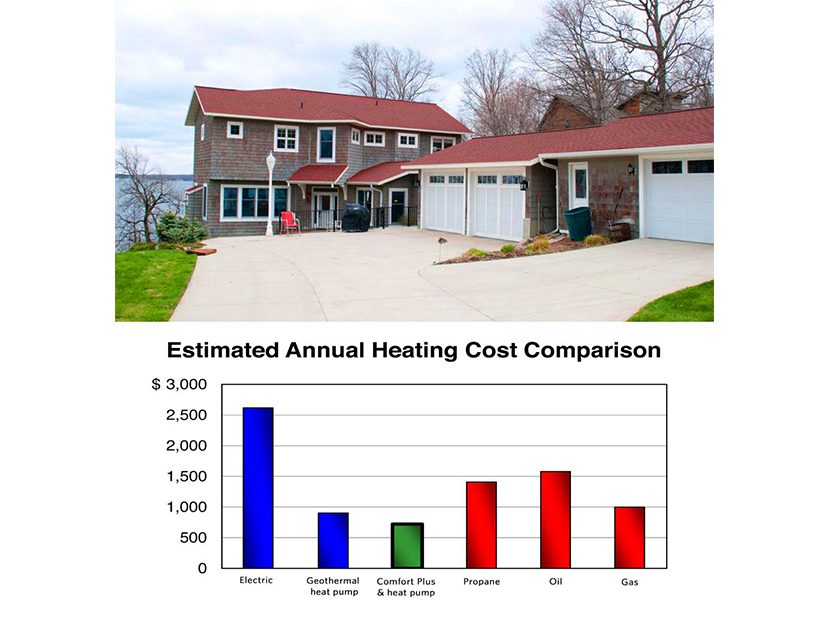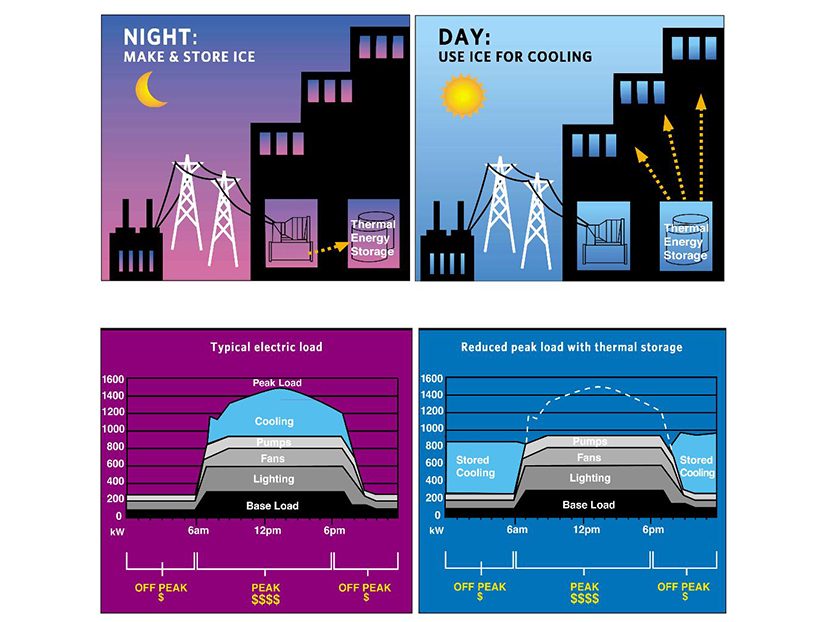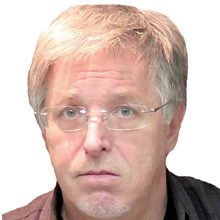Is All Electricity Storage Created Equal?
Off-peak thermal storage methods for heating and cooling.
















If you’ve ever marveled at how financial people seem to have ice in their veins, you might be interested to know that in the basement of the Goldman Sachs building on Wall Street, enough ice is stored there for many thousands of tailored suits cursing about liquidity and swaps, while slamming back Johnnie Walker Blue Label blended scotch whisky.
Modern day engineers continue to be focused on saving energy, using cleaner electrified energy and saving money. On hot summer days, the peak load for cooling the 2.2 million-square-foot, 43-floor Goldman Sachs building is about 6,000 tons. One “very cool” type of technology reduces that peak by about 2,500 tons.
The cooling system consists of 92 Calmac IceBank tanks, 11 feet tall and 7.5 feet in diameter, stored below ground in the building. Inside of each is 4 miles of tubing submerged under water. During summer night hours, the system makes 1.7 million tons of ice using inexpensive off-peak night-time power.
During the day, as it melts, the frigid ice water is used to displace at least one-third of the Goldman Sachs cooling load. “The system includes chillers for about 4,500 tons of cooling and about 19,000 ton/hours of ice-based stored cooling energy,” says Calmac President Mark McCracken.
Apart from a small amount of evaporation, the ice water isn’t wasted. The system uses mostly the same water over and over with heat exchangers, which transfer the cooling energy to the building’s conditioning system.
“The daytime power use of the total building would have been about 12 megawatts, but with thermal ice storage it operates at about 10 megawatts at peak because it shifts a couple of megawatts from day to night,” McCracken says. “It makes the ice at nighttime electricity rates, which are about 70 percent less. In Manhattan, electricity is about $50 per kW, so they might be saving $100,000 every month.”
Cutting peak loads is part of a city-wide effort to avoid expensive infrastructure upgrades or gas-fired plant additions. So thermal ice storage initiatives, such as the one at Goldman’s LEED Gold office tower, also make an impact in favor of other ratepayers and reduce our collective greenhouse gas footprint.
Calmat has installed its storage systems in hospitals, universities, grade schools and office buildings all over North America, as well as in about 60 countries around the world. The company was recently acquired by Ingersoll Rand/Trane. Asked about the outlook for large tanks full of ice in the context of products such as the Tesla Powerwall, McCracken explains the lifecycle cost of the Calmac thermal storage solution is about $5 per kWh, compared with about $100 per kWh for lithium-ion batteries.
Here’s to Macallan on the rocks and ice in our brokers’ veins!
Ice bears
Boothbay is a peaceful Maine resort area with a population of about 2,000 residents. It competes for tourists with Cape Cod, Martha’s Vineyard and Long Island. A few years ago, town councilors were happy to notice that more hotels, restaurants and bars were opening up in town. However, the new businesses were driving up the town’s electricity peak load. Boothbay is located on the coast on a sort of peninsula, which means upgrading power infrastructure to support the new businesses was not going to be easy or inexpensive. Miles of heavy transmission lines would have to be added.
“It was going to have to do an $18 million transmission line upgrade,” says Ice Energy CEO Mike Hopkins. His company joined with utility engineers and consultants to devise a solution. They eventually avoided the upgrade using a combination of Ice Bears, solar, a demand response program, conventional batteries and generators.
An Ice Bear also is an ice-based thermal energy system but it’s smaller than a Calmac, and includes storage and air conditioning in one outdoor unit. It provides 20 or 30 tons of cooling by freezing 450 gallons of water overnight. The Model 20 delivers up to 4 hours of cooling, using just 5 percent of the power that is usually needed.
Central Maine Power contracted with a consultant to install about 30 Ice Bears in different locations, in addition to the other load-reduction solutions. The total cost was about $6 million and saved the town from a significant rate increase.
Ice Bears also were used in an IKEA store in Centennial, Colorado, where a 350-ton geothermal cooling system was combined with 180 tons of thermal storage, reducing the cost of the geothermal by about $280,000. In this case, while the heat pumps produce ice at night, the system heats the building and the morning supply of domestic hot water, using recaptured heat energy from the ice-making process.
Electric boiler/ceramic storage
Off-peak thermal storage also works, of course, for heating. And interest in combined electric boiler/ceramic storage units, such as the 5100 Comfort Plus Hydronic Boiler series made in North Dakota by Steffes, have only increased. “There are ceramic bricks inside the unit,” says Sales Manager Al Takle. “We warm the bricks and then circulate water around the bricks when there is a call for heat. The advantage is that you can heat your ceramics during off-peak hours when the cost of electricity is about half price.”
He talks about a customer in Northern Minnesota who built a new two-story lakefront home with a total heat loss of 45,000 BTU/hr. It was heated with in-floor radiant, a Steffes Comfort Plus and an air-source heat pump.
Before installation, the mechanical engineer undertook a cost analysis of the heating and cooling alternatives for the property. It compared oil, gas, propane, electric baseboard and other alternatives. Oil would have been almost $1,600 per year, propane $1,400, and gas around $1,000. The Steffes system was calculated at about $722.
The 5100 series can be accompanied by a small air handler and comes in three storage capacities: 120 kWh (409,440 BTU), 180 kWh (614,160 BTU) and 240 kWh (818,880 BTU). Takle says the Comfort Plus is becoming popular in the upper Midwest in Minnesota, Wisconsin and Colorado.
Innovative modern thermal energy storage
Not surprisingly, given that thermal energy storage is more efficient than storing electrons, research labs around the world are testing new ways to achieve high efficiencies. A lot of plants don’t have room to house 92 Calmac tanks like the Goldman Sachs building.
One of the most successful new products is being commercialized by Phase Change Energy Solutions in Asheboro, North Carolina, and manufactured at its North Carolina production facility. The company has spent years working on government research projects to develop a technology called BioPCM. It’s a plant-based, phase-change material (thus PCM) produced as a gel or a solid, and used in several building and HVAC products.
BioPCM can store latent heat inside ceiling blankets and wall panels to improve the efficiency of a building’s envelope, as well as inside a tank, to achieve off-peak savings through thermal energy storage. The difference, says Application Engineer Brandon Cox, is efficiency; PhaseStor is more efficient than ice. “The system doesn’t use glycol and our water can be warmer at 40 F or 45 F, compared with 23 F glycol for making ice,” he explains.
The company’s PhaseStor tank stores thermal energy within specified temperature ranges. Heat exchangers containing process fluid are fully immersed in BioPCM. Latent heat is absorbed or released when the BioPCM changes either from a solid to a solid, or a solid to a gel. The changes take place at a constant temperature and there is no expansion, contraction or leakage. The BioPCM is organic, nontoxic and noncorrosive. The research suggests it can perform a virtually unlimited number of cycles with no change in its physical or chemical properties.
Phase Change calls the melt/freeze transition temperature the “Q value.” Popular Q values are 73 F, 77 F and 81 F but PaseStor can be customized for Q values from -58 F to 347 F.
Storage, electric boiler outlook
The global thermal energy storage market will grow by about 16 percent each year for the next few years, hitting $3 billion by 2023, according to Market Watch Research in New York. The U.S. energy storage market (including nonthermal electricity storage) is growing even more quickly.
Much of this expansion is related to renewable power generation. It grew 27 percent in 2017 and could triple in 2018, expanding by 186 percent to 1,233 megawatt-hours, according to GTM research.
The U.S. electric boiler market is heading for $300 million and growing at about 3 percent each year. Electrics are expected to continue to gain market share against boilers using fossil fuels.
If you’re an engineer pondering energy storage, you might do well to compare the cost and efficiency of thermal with lithium-ion approaches, especially in HVAC applications. If you’re a Grey Goose-swilling Wall Street superstar, you might be curious about how cool the Goldman Sachs team is during witching hours and flash crashes. It must be all that ice down below.





